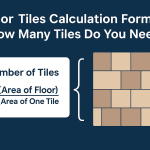Concrete is used everywhere in buildings, roads, homes, and bridges. But fresh concrete must be just right – not too dry, not too wet. The concrete slump test is a quick way to check if your concrete mix is good to use. It shows how easily the concrete flows and spreads. This test is done right on the job site (project location) in just a few minutes.
If you want to know “what a concrete slump test is and how to do it step by step”, this simple guide is for you. I hope you will be satisfied after visiting this page.
Why Do We Need the Slump Test?
- Checks if the concrete is too stiff or too runny.
- Helps avoid cracks and weak spots later.
- Done fast with basic tools.
- Used on almost every construction site.
Tools You Need (Concrete Slump Test Kit)
- Slump Cone: A metal or plastic cone, 12 inches tall.
Bottom is 8 inches wide. The top is 4 inches wide. - Flat Base Plate: Smooth and strong. No holes.
- Tamping Rod: Steel rod, 24 inches long, ⅝ inch thick. Ends are round.
- Measuring Tape: To measure how much the concrete drops.
- Stopwatch: This is used to measure the time it takes for the concrete to slump if required by the testing specifications.
- Water: This is used to wet the slump cone before the test and to add to the concrete mix if required.
- Cleaning Equipment: This includes a brush, a sponge, and a bucket of water, used to clean the tools and equipment after each test.
- Safety Equipment: This includes gloves, safety glasses, and a dust mask, used to protect the tester from any potential hazards during the test.

You can buy a full slump test kit online or from a hardware store.
Step-by-Step: How to Do a Concrete Slump Test
Step 1: Clean the cone
Wipe inside the cone. Putting a little oil on the concrete doesn’t stick.
Step 2: Place the cone on its flat base
Put the cone on the base plate. Keep it steady. No shaking.
Step 3: Fill with concrete – 3 layers
- Add first layer (⅓ full).
- Poke 25 times with the rod. Spread pokes evenly.
- Add a second layer. Poke 25 times.
- Add a third layer. Poke 25 times.
Step 4: Make the top flat
Remove extra concrete. Smooth the top with the rod.
Step 5: Lift the cone slowly
Hold the base. Lift the cone straight up in 5–10 seconds.
Concrete will drop down.
Step 6: Measure the drop
Put the cone upside down next to the dropped concrete.
Measure from the top of the cone to the top of the concrete.
This drop is called a slump.
Example: If it drops 4 inches → slump = 4 inches.
Things to Be Careful About (Simple Tips)
- Clean the cone and plate before every test.
- Don’t let the concrete dry – test right after mixing.
- Do the test where there is no shaking or wind.
- If concrete falls sideways or collapses, do the test again.
What Do Slump Results Mean? (Easy Table)
| Slump Value | Workability Level | Best For |
|---|---|---|
| 0 – 1 inch (0–25 mm) | Very Low | Roads with heavy machines |
| 1 – 2 inches (25–50 mm) | Low | Simple foundations |
| 2 – 4 inches (50–100 mm) | Medium | Normal walls, beams |
| 4 – 7 inches (100–175 mm) | High | Pumping, tight spaces |
Rule:
- Low slump = thick, hard to pour.
- High slump = wet, easy to pour.
Common Slump Classes (Quick Look)
| Class | Slump Range |
|---|---|
| S1 | ½ – 1½ inches |
| S2 | 2 – 3½ inches |
| S3 | 4 – 6 inches |
| S4 | More than 6 inches |
Conclusion
The concrete slump test is easy, fast, and super useful. Do it every time you mix concrete. It helps you pour strong, smooth slabs and avoid problems later.
Tip: Always follow your local rules (like ASTM, IS, or BS codes) for best results.
Note: This is a simple guide. For big projects, ask a civil engineer.












